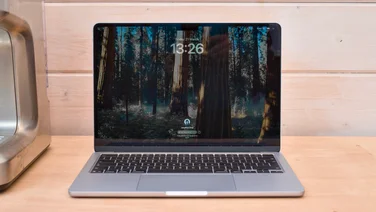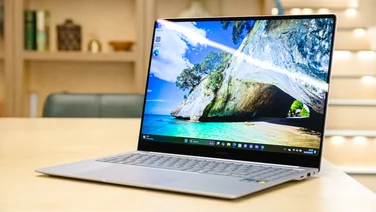To help us provide you with free impartial advice, we may earn a commission if you buy through links on our site. Learn more




MSI’s new ultra-portable, the X370, uses AMD’s E-350 Vision platform, a combination of an AMD chip and graphics processor that’s designed to reduce power consumption and therefore prolong battery life. Along with the 1.6GHz dual-core processor comes 4GB of RAM and a 500GB hard disk. These are all normal specifications for a general purpose laptop, but the X370 only weighs 1.7kg and lasts for over seven hours away from a power socket.

At a glance, the X370 looks slim and smart, with its lid decked out in a glossy black honeycomb pattern. A chrome strip around the edge of the case adds a bit of class, and all the ports around the edge are also surrounded by chrome. Opening the lid reveals a textured keyboard panel, but the overall effect feels a little dated.

Aesthetics aside, the X370 is a step up from an Intel Atom-based netbook. With a score of 12 in our benchmarks, it’s fine for general office and internet tasks, and is around twice as fast as a regular netbook. Modern games are out, as the AMD Radeon HD 6310 managed just 10.5fps in our Call of Duty 4 test. Even turning the detail settings down we couldn’t get a much faster score. More usefully, the graphics chip can decode HD video.
Battery life of seven hours and 21 minutes is impressive and means that you can carry around the 1.7kg laptop for most of a working day without having to charge it. However, this impressive battery life is achieved by using a bulbous eight-cell battery that protrudes some way from the bottom of the laptop. While it conveniently angles the keyboard, it also adds weight and depth. With the optional 4-cell battery, the X370 would be easier to carry, but battery life would be halved.
The 13.4in screen has a resolution of 1,366×768, which gives you plenty of desktop space. It’s a definite step up from the average netbook screen with a relative low resolution. We found that the screen’s LED backlighting was even, but not particularly bright, and thanks to a combination of a glossy finish (which can reflect overhead lights) and tight vertical viewing angles, you’ll need to adjust the screen’s tilt carefully to get the best picture. When you do, colours are accurate but dull, and contrast is average.

The keyboard has separated keys with a slightly curved surface, so your fingers can feel where they’ve hit the key, providing better feedback. Their action is light, with a crisp bite at the top of the key stroke, again providing excellent feedback for touch-typists. The layout isn’t perfect, though; the Enter key is single-height, while the right Shift key is too wide, forcing the Backslash key to the left of the Space bar. There’s a large, responsive touchpad, but it has a stiff see-saw button with a massive dead area in its centre.

With its comparatively large screen and long battery life the X370 appears to be a good compromise between size and usability. However, it’s relatively expensive and the Acer Aspire TimelineX 1830T is only a touch more expensive, but has far better performance and even longer battery life.






